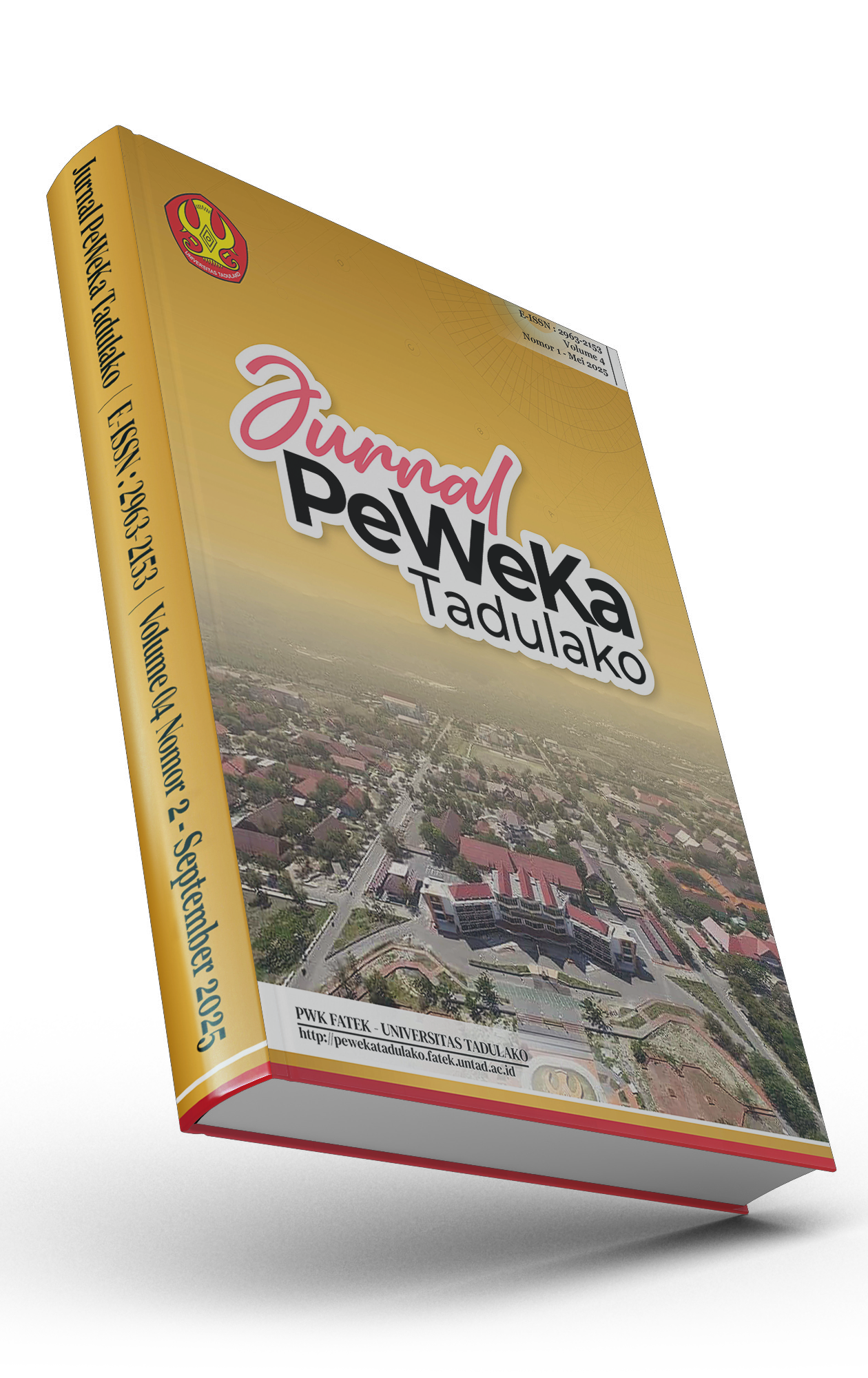Peran Kereta Rel Listrik (KRL) Jogja-Solo sebagai Akselerator Transformasi Kawasan di Pusat Kota (Kasus: Stasiun Tugu Yogyakarta)
DOI:
https://doi.org/10.22487/peweka.v4i2.78Keywords:
KRL Commuter Line, Urban Transformation, Tugu Station, Transportation HubAbstract
The operation of the Jogja-Solo Commuter Line (KRL) since 2021 has been a significant transportation infrastructure intervention connecting Yogyakarta and Surakarta. Tugu Station, as a central hub in the heart of Yogyakarta, presents a unique case where the impact of this infrastructure does not create new growth but rather potentially accelerates the dynamics within an established commercial and tourism area. This study aims to analyze the role of the KRL in the process of social, economic, and spatial transformation around Tugu Station, Yogyakarta. Using a qualitative method with a case study approach, data were collected through in-depth interviews with local residents, business owners, and commuters, reinforced by field observations within an 800-meter radius of the station. The findings show that the presence of the KRL acts as a significant accelerator of change. Spatially, an increase in land-use intensity occurred, marked by the conversion of residential properties into commercial enterprises and a rise in building density. Economically, the emergence of new business opportunities in the service and trade sectors has boosted local economic activity, albeit accompanied by increased competition. These changes also influenced social dynamics through shifts in daily mobility patterns and the emergence of diverse perceptions regarding the area's comfort and safety. Collectively, these findings illustrate a process of functional densification in the area, which has also triggered business competition and an economic shift among local residents. In conclusion, the role of the KRL at Tugu Station is identified as extending beyond its function as a transportation provider, acting instead as an agent that contributes to reshaping the dynamics of the city center. This finding implies the importance of adaptive spatial planning policies to manage growth and maintain a balance between commercial, tourism, and social functions in key transit areas.
References
Arifin, T. N., Sodikin, & Sari, T. T. (2025). Analisa kinerja operasional KRL Commuter Line jurusan Yogyakarta–Solo. Rang Teknik Journal, 8(2). Retrieved from https://jurnal.umsb.ac.id/index.php/RANGTEKNIKJOURNAL/article/view/6228/4422
Ayyasi, S., & Dewi, D. I. K. (2024). Karakteristik Pengguna Antarmoda KRL–BRT Transjogja di Kawasan Stasiun Tugu Yogyakarta. Teknik PWK (Perencanaan Wilayah Kota), 13(3), 180-188.
Cervero, R., & Murakami, J. (2010). Effects of built environments on vehicle miles traveled: Evidence from 370 US urbanized areas. Environment and Planning A: Economy and Space, 42(2), 400–418. https://doi.org/10.1068/a4236
Gunawan, Z. A., Miladan, M., & Pujantiyo, B. S. (2023). Kesesuaian Kawasan Stasiun Transit Tugu Yogyakarta Berdasarkan Konsep TOD. Jurnal Desa-Kota, 11(2), 121–134. https://jurnal.uns.ac.id/jdk/article/view/72195
Hafizh, R. (2021). Kereta Rel Listrik Yogyakarta–Solo [Tugas akhir, Universitas Teknologi Yogyakarta].
Hapsari, G. (2022). Analisis kinerja operasi Kereta Rel Listrik Jogja-Solo dan dampak yang dihasilkan terhadap layanan pada lintas Jogja-Solo [Tesis, Universitas Gadjah Mada].
Herwangi, Y., Mardiansjah, F. H., & Widyastuti, S. (2022). Accessibility, land use, and economic activity change in transit-oriented areas in Yogyakarta. Journal of Regional and City Planning, 33(1), 1–16. https://doi.org/10.5614/jpwk.2022.33.1.1
Kuncoro, M. (2018). Perencanaan Pembangunan. Gramedia Pustaka Utama.
Pemerintah Republik Indonesia. (2020). Rencana Pembangunan Jangka Menengah Nasional (RPJMN) 2020–2024. Kementerian Perencanaan Pembangunan Nasional/Badan Perencanaan Pembangunan Nasional.
Rizki, V. A. (2022). Pengaruh penambahan stasiun pemberhentian terhadap perilaku perjalanan penumpang dan penggunaan KRL Yogyakarta Solo [Skripsi, Universitas Gadjah Mada].
Rusqiyati, E. A. (2021). KRL Yogyakarta-Solo Pemantik Pertumbuhan Ekonomi Wilayah. https://www.antaranews.com/berita/1995024/krl-yogyakarta-solo-pemantik-pertumbuhan-ekonomi-wilayah
Sharma, P., & Dehalwar, V. (2025). Transit-oriented development: An economic sustainability perspective in developing countries. Transportation in Developing Economies, 11(2), 45–58. https://doi.org/10.1007/s40890-025-00245-1
Susilowati, F., Chrishnawati, Y., & Puspitasari, E. (2022). Proyeksi Transit Oriented Development oleh Masyarakat di Stasiun Tugu Yogyakarta. Jurnal Transportasi Multimoda. 19. 43-52.
Todaro, M. P., & Smith, S. C. (2020). Economic Development (Vol. Thirteen Edition). Pearson.
Utomo, S. H. T. (2009). Jalan Rel. Beta Offset Perum Fakultas Teknik UGM.
Zhang, M. (2025). Understanding the economic impacts of rail transit-oriented development: Addressing equity and climate challenges. Urban Rail Transit, 11(1), 34–48. https://doi.org/10.1007/s40864-025-00242-y
Downloads
Published
How to Cite
Issue
Section
License
Copyright (c) 2025 Pawiloy Ramadhani, Deva Fosterharoldas Swasto

This work is licensed under a Creative Commons Attribution-ShareAlike 4.0 International License.







